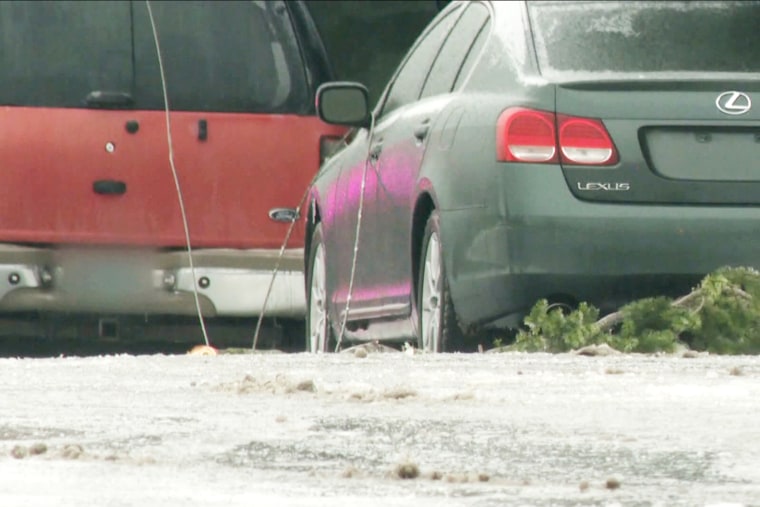A deadly winter storm has hammered the Pacific Northwest this week, creating slippery, icy conditions.
Three people in Portland, Oregon — a woman, her boyfriend and her 15-year-old brother — were electrocuted Wednesday after slipping on ice near a live power line. A large tree branch likely fell onto utility wires, then knocked one of those wires onto the couple’s SUV.
Ice buildup can weigh down tree branches and power lines, causing them to snap and fall — thereby putting people at risk of electrocution.

According to Portland Fire & Rescue, the couple exited their SUV after the line fell onto their car, and at some point, their feet touched the ground while their bodies were still touching the vehicle.
“They became part of the active electrical circuit which resulted in their deaths,” the fire department said in a news release.
The Associated Press reported that the man and woman — who was pregnant — each slipped on icy concrete as they attempted to retrieve their 9-month-old baby from the car. The woman’s teenage brother was electrocuted when he came out to help.
The baby survived after an 18-year-old neighbor removed the infant from his father’s chest.
The news has prompted safety experts to share tips on how to approach dangerous situations involving live wires.
If a power line falls on your car while you’re inside, the Center for Disease Control and Prevention advises staying in the vehicle, keeping the ignition on and calling 911.
That’s because the ground near a downed power line can be energized, as can any standing water nearby. (Although perfectly pure water does not conduct electricity, the water we encounter in the real world almost always has something dissolved in it.) Even fallen branches or trees should be avoided because live wires can get entangled in them, and wood can conduct electricity when wet.
“The only time you ever want to exit the car near downed power lines is if the vehicle is catching fire,” said Michael Morse, a professor of electrical engineering at the University of San Diego. In that case, he suggested, try to push the door open and jump from the vehicle without touching the car and the ground at the same time.
“I’ve sadly done a number of cases where people exiting vehicles are killed because they touch an electrically live vehicle while touching the earth and they become a direct conduit,” Morse said.
The Electrical Safety Foundation, an organization that publishes safety tips to prevent electrically related deaths, suggests that to seek help without leaving a car, people can try honking the horn but should instruct others not to get too close.
If you’re driving and approach a downed power line, do not drive over it, the foundation says. Morse said you can back the car away from the line if it’s safe to do so, but generally people should sit tight and call 911.
“When you see a downed power line, stay at least 35 feet away, which is about three car lengths or so,” said Daniel Majano, program manager at the Electrical Safety Foundation.
Most people can’t tell the difference between a power line and a telecommunication or cable line, Majano said, so you should assume any downed line is dangerous and call local authorities.
Morse, who has consulted for roughly 600 legal cases involving electrical injuries, said the young woman who rescued the baby on Wednesday was lucky not to have been injured.
“Your average citizen shouldn’t go rushing into an electrically dangerous area because they may in fact cause their own death and contribute nothing to saving somebody,” he said.
Touching someone who’s in contact with a downed wire could be deadly, because human bodies can conduct and spread electricity, according to utility company National Grid.
The Electrical Safety Foundation says the proper way to move away from a downed wire is to shuffle with small steps, keeping both feet together and on the ground at all times to minimize the chances of being shocked.
In general, the Electrical Safety Foundation advises people to stay at least 10 feet away from any power line, even if it hasn’t fallen.
“Let’s say you’re clearing snow off your roof or you’re doing some sort of home improvement,” Majano said. “The electricity can jump from those power lines to, let’s say, a metal ladder or a paintbrush.”









Recent Comments